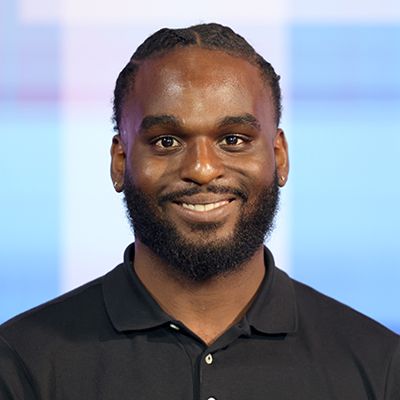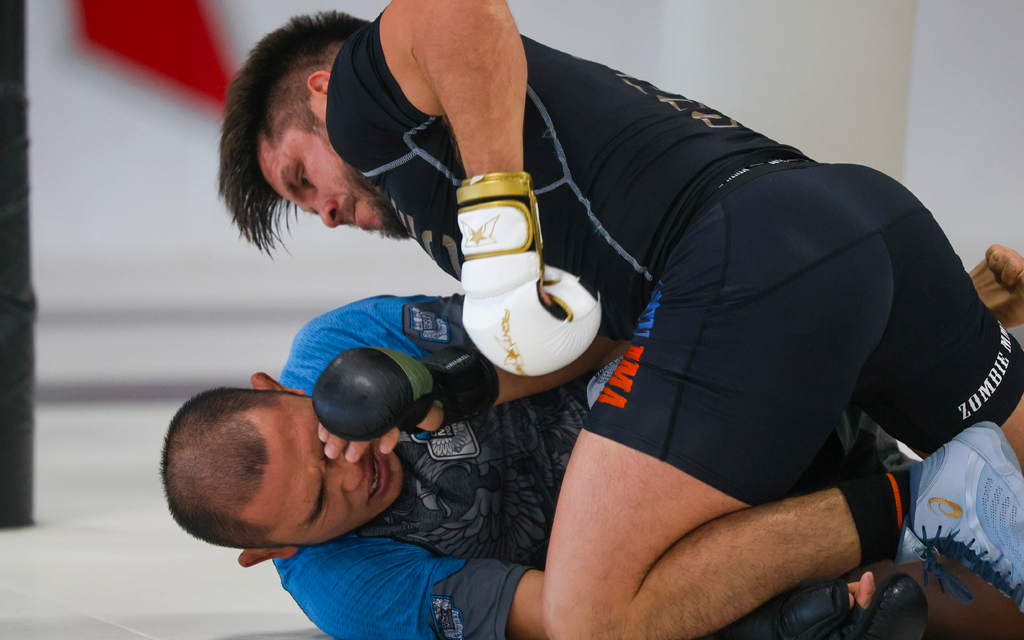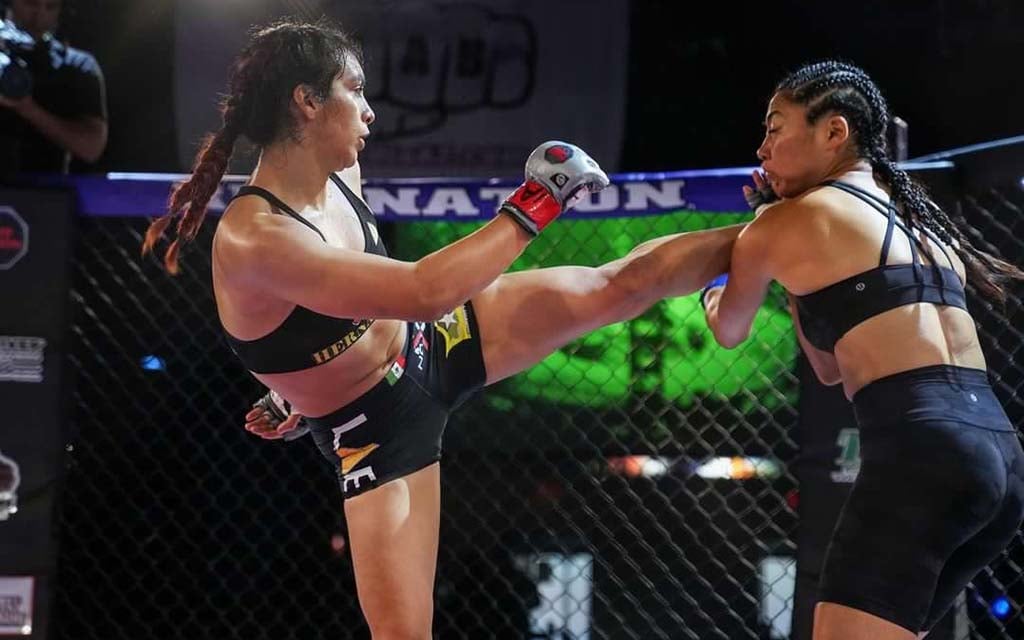PHOENIX – Retired UFC fighter Vaughan Lee sat in tears on the bleachers inside Scottsdale’s Fight Ready gym, reflecting on the physical and emotional pain of caged fighting.
Lee said he was “pretty lucky” that a broken orbital bone – the structure around the eyeball – was the most significant injury of his 15-year fighting career. However, as a consequence of that injury, Vaughan said he experienced double vision for the last two years of his career and still has trouble seeing today.
“It’s like I’m watching two televisions,” Lee said. “I can see you here, and I can see you there. It just depends on which one I want to focus on. And it changed my perspective on life and myself like, ’Wow, I’m inside this body looking out.’”
Wiping away tears, Lee spoke about the injuries he sustained – and those that he inflicted on others – in the sport he loves.
And he spoke about how that violence has driven him away.
“I thought about my opponent, and I thought, ‘If I beat him, he’s going to feel how I felt. I’m going to make him depressed,’” Lee said. “I didn’t want that for my opponent: It makes me emotional.”
Not much is pleasant about suffering significant injuries while often being compensated unequally in the sport of mixed martial arts. Still, there is something about MMA that builds an undeniable amount of passion and resilience among athletes who compete in the sport.
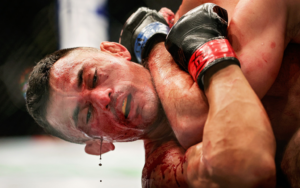
Injuries are an inherent part of the MMA world, and fighters such as Douglas Silva de Andrade often train excessively as a preventative measure. (Photo by Carmen Mandato/Getty Images)
It is a passion that can lead to pain and injury, according to Austin Schoen, a chiropractor and strength coach at Fight Ready.
“All of them train too much,” Schoen said. “Every day of my life, it is a constant battle to try to get MMA fighters to do less.”
Injuries are a part of every sport, and what MMA fighters do over the following 24-48 hours after a fight is critical.
Once a fighter leaves the octagon, win or lose, they are taken to a holding area in the backstage section of the arena, where they are seen by a physician hired by the event’s promoters.
After an assessment, the physician advises the fighter about injuries the doctor detects and orders fighters to seek additional treatment when necessary. Once that’s completed, fighters are left to their own devices.
To aid fighters in the recovery process, Schoen creates in-depth individual care plans for each athlete based on their fight style, the severity of their injuries and any prior injuries.
Because MMA is a violent sport, Schoen performs his own full, head-to-toe assessment around 14 days after the fight. Some common injuries Schoen tends to see among MMA fighters – after fighting or training – include concussions, hand fractures, foot fractures, labral tears in the hips, shin injuries, jaw injuries, bone bruises, ACL injuries, Achilles tendon ruptures and disk herniations.
Disk herniations occur when the jelly-like center of the rubbery disk that sits in between the bones of the spine either slips or ruptures. Schoen said it is the No. 1 injury that he treats due to frequent grappling during training, during which fighters’ heads are constantly being tugged, pulled and twisted, resulting in injuries in the neck.
However, Schoen said treating an Achilles rupture is the most demanding injury for him and the fighter to overcome due to the nature of the tissue and its lengthy recovery time.
Unlike ACL injuries in the knee, which often allow fighters to continue some training, Schoen said an Achilles rupture limits fighters to only upper-body workouts because of the pain severity in the lower extremities.
Because of the sensitive nature of concussions, Schoen feels comfortable treating minor head injuries but typically punts to other providers who specialize in the Complete Concussion Management Institute protocols when he believes a concussion has occurred.
Every fight and situation is different, so treatment depends on many factors. But Bellator’s Bryce Logan, who also teaches and trains at Fight Ready, said it “feels like you played the hardest football game of your life” after competing in the octagon.
“Your adrenaline after the fight kind of prevents you from feeling all the bumps and bruises that you have,” Logan said. “But when you wake up the next day, you’re like, ‘Dang, I got this lump on the side of my head. My forearms are all bruised up. My shins are all bruised up, and it literally feels like you got in a car accident.”
Schoen said most fighters hate needles, but acupuncture is often the most rewarding for fighters after a bout.
“So I’ve convinced most of them that that’s what we’re going for,” Schoen said about fighters’ displeasure with needle treatments. “All of them love muscle work, like direct manual therapy. We have something called ARP waves, which is just electric (stimulation) at a patented voltage and setting to where it’s allowing the muscle to recover.”
Outside of dry-needling, one of Schoen’s primary methods to fast-track the recovery process is to get his athletes onto a stationary bike, sometimes as soon as the day after the fight.
“I want them to do a 30-40 minute bike ride, where it’s not as stressful on the joints,” Schoen said. “But the more blood we have pumping through the system, the faster they’re going to recover.”
It’s all about reducing symptoms. Schoen’s philosophy is, whether a fighter is injured pre- or post-fight, they can’t cheat the fighter’s physiology or healing time by trying to fix it immediately. So Schoen treats the symptoms while their body heals.
“The No. 1 thing that hinders MMA fighters, and combat athletes in general, is all they want to do is more,” Schoen said. “And they need to let their bodies recover from the stimulus they put onto it because everything they do is stimulus. The only way to actually get bigger, get stronger, get faster, be better is to let your body adapt to the stimulus you just put it under.
“It’s a strength and conditioning principle.”
Henry Cejudo, an Olympic gold medalist and former dual UFC bantamweight and flyweight champion who grew up in the Maryvale neighborhood of Phoenix, has a pragmatic approach: Injuries and pain go hand-in-hand with the sport as much as victory and defeat.
Cejudo came out of retirement in May to fight Aljamain Sterling for the bantamweight title at UFC 288 but lost in a split decision.
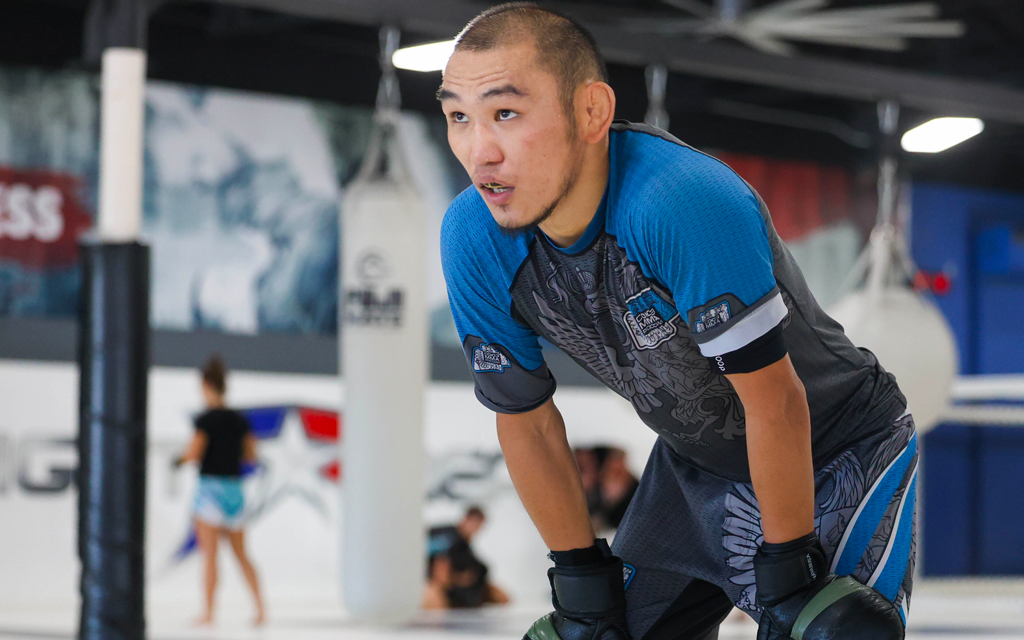
MMA fighters like Badmatsyren Dorzhiev recognize the reality of the physical toll mixed martial arts takes on fighters and their opponents. (Photo by Reece Andrews/Cronkite News)
“Whether you won or lost (there will be injuries),” Cejudo said. “The most important part is the winning side; the worst part is the losing side. And, honestly, (the opponent) is probably beat up, too. But he got the victory, so that’s how I felt for my last fight.
“But sometimes you have to eat the pain,” Cejudo said, expressing the “no-pain, no-gain” attitude Schoen described among combat athletes. “It’s a good reminder the s— you do is real.”
In the end, athletes and the physicians who treat them recognize that combat sports are violent and injuries are an inevitable part of the game.
“You’re not supposed to throw, basically, a bag of bones at another human and inflict trauma,” Schoen said. “That’s not what our bodies were designed for. So I know injuries are going to happen, and they need to know injuries are going to happen. We’re just going to fix them after.
“And they’re probably going to get injured in the next one and in the next one. As long as it’s nothing that’s going to put you out for two months (of training), then we’ll get them ready to go in four months.”
Lee said after fracturing his orbital bone, it was “very challenging” to get back into the octagon. He said he would only attempt to submit his opponent as fast as possible once he returned.
“I never wanted my opponent to feel the way I felt,” he said. “That’s kind of what brought me away from fighting.”
Lee’s last professional MMA bout was in February 2018, when he lost by decision to Jack Shore following a grueling bout in London. When Lee arrived home, bruised up, his 5-year-old daughter was in tears, leading him to say, “I’m not doing this again.”
